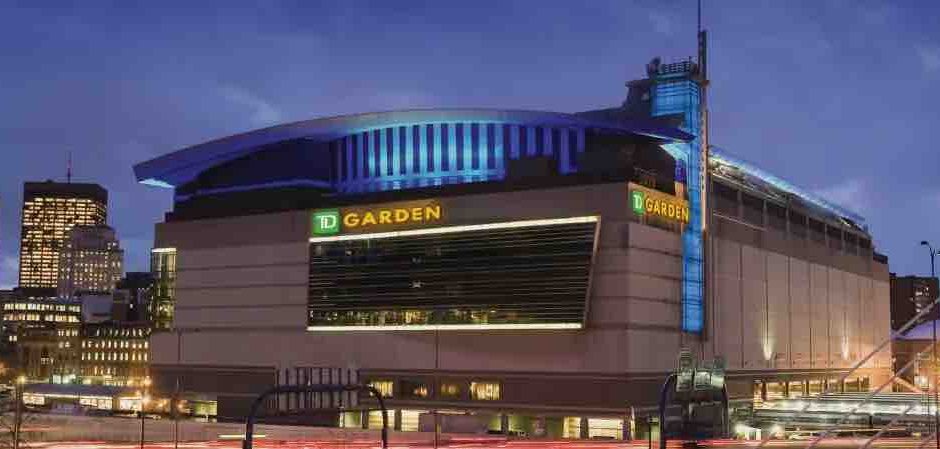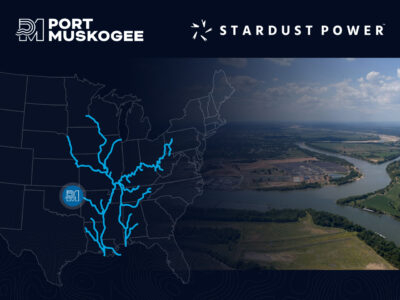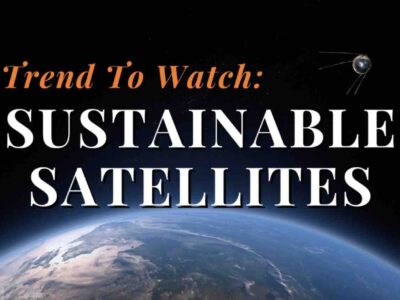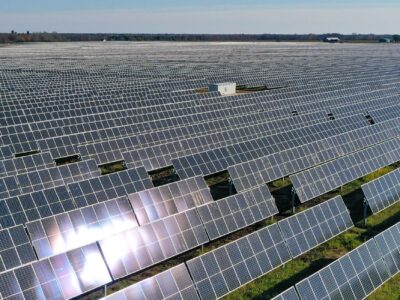When the TD Garden opened in 1995, it faced the unenviable task of replacing the historic Boston Garden, and it couldn’t hide from comparisons. The current home to the NBA Celtics and NHL Bruins stands next to where the old Garden was located and, like its predecessor, the new Garden sits on top of North Station, an important transportation center in Boston. In fact, a shared entrance to both contains design inlays that represent such things as where the Bruins’ face-off circles and the Celtics’ out-of-bounds lines would have been in the old Garden.
However, the new arena — known originally as the FleetCenter from 1995–2005 — signaled a huge upgrade from the original Garden, which lacked air conditioning, had maintenance issues, and had an ice rink smaller than NHL-regulation size. While the new facility contained many state-of-the-art elements from the mid-1990s, its owner, Delaware North, has stepped up its game regarding sustainability since the start of the 21st century.
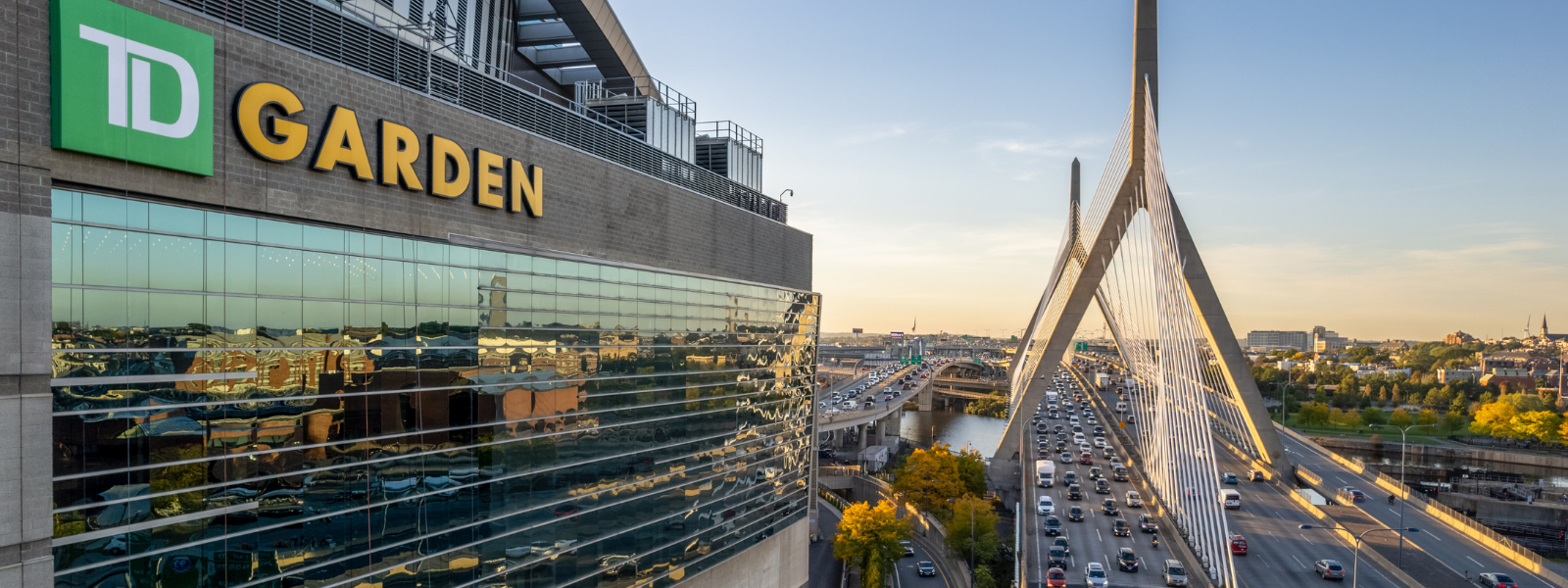
Photo Courtesy TD Garden
To increase the amount of recycling, Delaware North installed containers inside the arena and in North Station to capture the used bottle and newspaper trash generated by the thousands of daily commuters and millions of fans who attend events at TD Garden. Beyond these recycling efforts, the venue decreased its solid waste rates and took part in Massachusetts’ Department of Environmental Protection (EPA) and the U.S. Environmental Protection Agency’s WasteWise programs.
To combat its electricity consumption, the Garden switched its outdoor lighting to LED lighting, which used 50% less energy.
It also worked with an energy service company to further lower its electricity usage by approximately 15–20%. These sustainability-minded projects led the EPA to recognize the Garden for its green initiatives.
TD Garden has been particularly active in increasing its energy efficiency. The arena has added thousands of LED lights, starting in 2013, and improved its overall electricity systems.
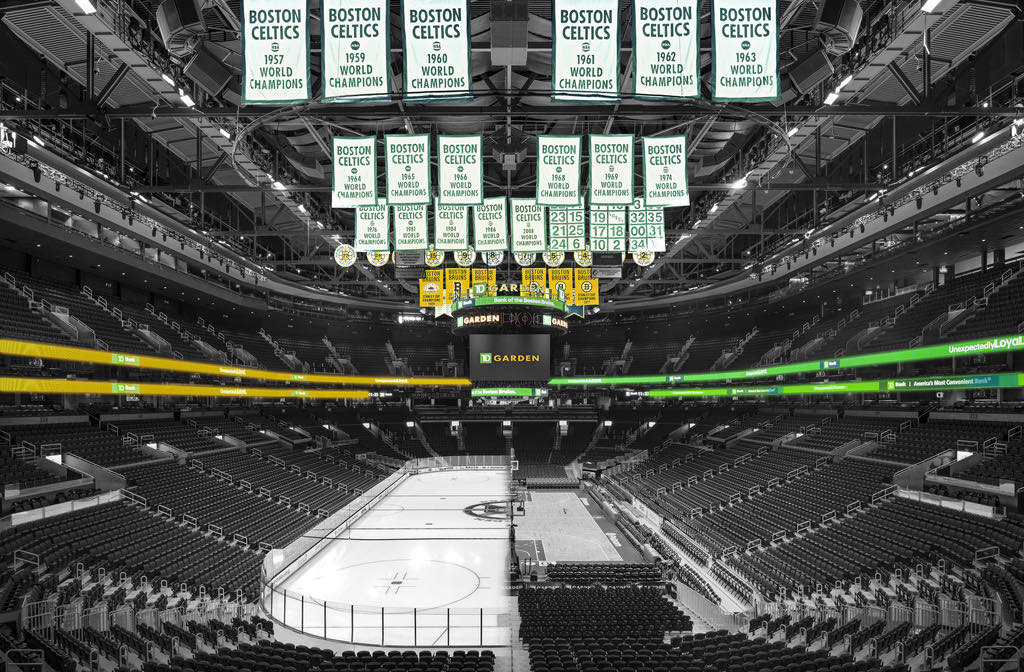
Photo Courtesy TD Garden
“The new LED lighting and lighting controls help the TD Garden by providing better energy efficiency, operational cost reduction, consistent presentation and control, flexibility to address various tenant and client needs, and future opportunities to expand and evolve,” Hugh Lombardi, former TD Garden senior vice president and general manager, stated in 2016.
Energy usage has decreased, too, through the installation of comprehensive controls that serve to operate such equipment as lights, fans, and heat pumps in a more environmentally economical way.
The improvements result in a savings of almost 10 million KWh of electricity annually, equating to 4,705 tons of avoided carbon dioxide emissions — equal to removing more than 1,050 cars from the road annually.
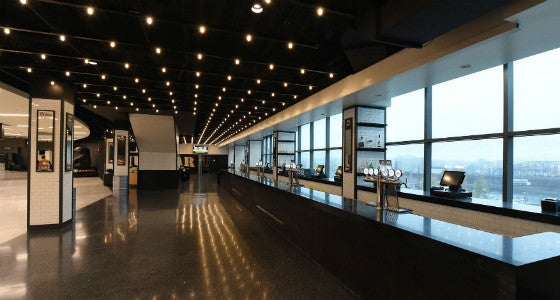
Photo Courtesy TD Garden
Delaware North has a long history with impressive waste management projects at TD Garden, through reducing single-use plastics (including straws), eliminating Styrofoam, and sourcing compostable and biodegradable materials. However, more recently it has gone hi-tech to up the Garden’s recycling results with the 2023 introduction of Oscar Sort to the arena. Oscar Sort is an open immersive reader connected to recycling bins that uses artificial intelligence to let people know which bin is correct for the item they are throwing away.
This effort is a major advancement because contamination is a significant problem in the recycling process, and it is particularly important at TD Garden because the arena generates almost 12 million pieces of trash a year. That adds up to around 28,000 football fields or over 300,000 basketball courts! During the first week alone, the Oscar Sort bins reached a diversion rate of 80%. One very cool aspect of the Oscar Sort is that it “gamifies” the recycling experiences, as folks have the chance to win team merch or even cash by recycling correctly.

